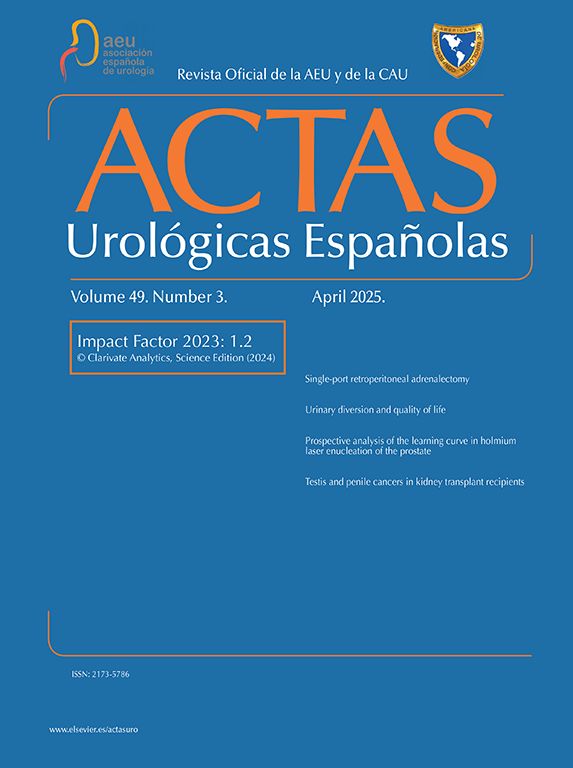The Satisfaction Survey for Inflatable Penile Implant (SSIPI) is useful tool to assess patient outcomes after inflatable penile prosthesis (IPP) surgery. However, this survey is not validated in Spanish. This work aims to report the initial steps carried out for the linguistic validation of the SSIPI translation into Spanish.
MethodThe linguistic validation process had the following steps: (i) SSIPI forward translation, (ii) reconciliation, (iii) back translation, (iv) harmonization, review, and correction of the translation, and (v) cognitive interviewing and testing the new translated version. Urologists from Spain, South America, and the United States participated in these steps. The last step was performed in 3 centers: (i) Medellín, Colombia; (ii) Florida, United States; and (iii) Madrid, Spain.
Results19 Spanish-speaking patients tested the initial translated version of SSIPI. Most patients found the translated SSIPI questionnaire easy to understand; however, of the 16 questions, patients most frequently commented that questions 3, 5, and 7 should be modified. The median number of observations or comments per question was 1 (1, 3). Based on these suggestions, the research group adapted the questionnaire to obtain the final version in Spanish.
ConclusionThis study evaluates the initial steps for the translation and linguistic validation of the SSIPI questionnaire into Spanish. The results indicate a remarkable level of readability and comprehension, while some challenges were observed in certain questions. This work demonstrates that a standardized and protocolized process is needed to translate and validate surveys into Spanish.
“El cuestionario de satisfacción para el implante de prótesis de pene inflable” (Satisfaction Survey for Inflatable Penile Implant (SSIPI)) no se encuentra validado al español. El objetivo es reportar los pasos iniciales para validar lingüísticamente el cuestionario SSIPI al español.
MétodoEl proceso de validación lingüística se compuso de las siguientes etapas: (i) la traducción directa del SSIPI, (ii) reconciliación, (iii) traducción de vuelta al lenguaje original, (iv) armonización/revisión de la traducción, y (v) finalización, entrevista cognitiva y testeo de la versión traducida obtenida. Urólogos de España, Sudamérica y Estados Unidos participaron en estas etapas. La última etapa se testeo en 3 centros: (i) Medellín, Colombia, (ii) Florida, Estado Unidos, y (iii) Madrid, España.
Resultados19 pacientes de habla hispana testearon la versión inicial de SSIPI traducida. La mayor parte de los pacientes consideró el cuestionario SSIPI traducido fácil de entender, sin embargo, de las 16 preguntas, pacientes comentaron con mayor frecuencia que las preguntas 3, 5 y 7deberían ser modificadas. La mediana de observaciones o comentarios fueron 1 (1, 3) por pregunta. El grupo de investigación, basado en estas sugerencias, adaptaron el cuestionario para obtener la versión final en español.
ConclusiónEste estudio evalúa los pasos iniciales para la traducción y validación lingüística del cuestionario SSIPI al español. Los resultados indican un nivel notable de legibilidad y comprensión mientras que se observaron algunos desafíos en ciertas preguntas. Este trabajo demuestra que se necesita un proceso estandarizado y protocolizado para traducir y validar encuestas al español.








